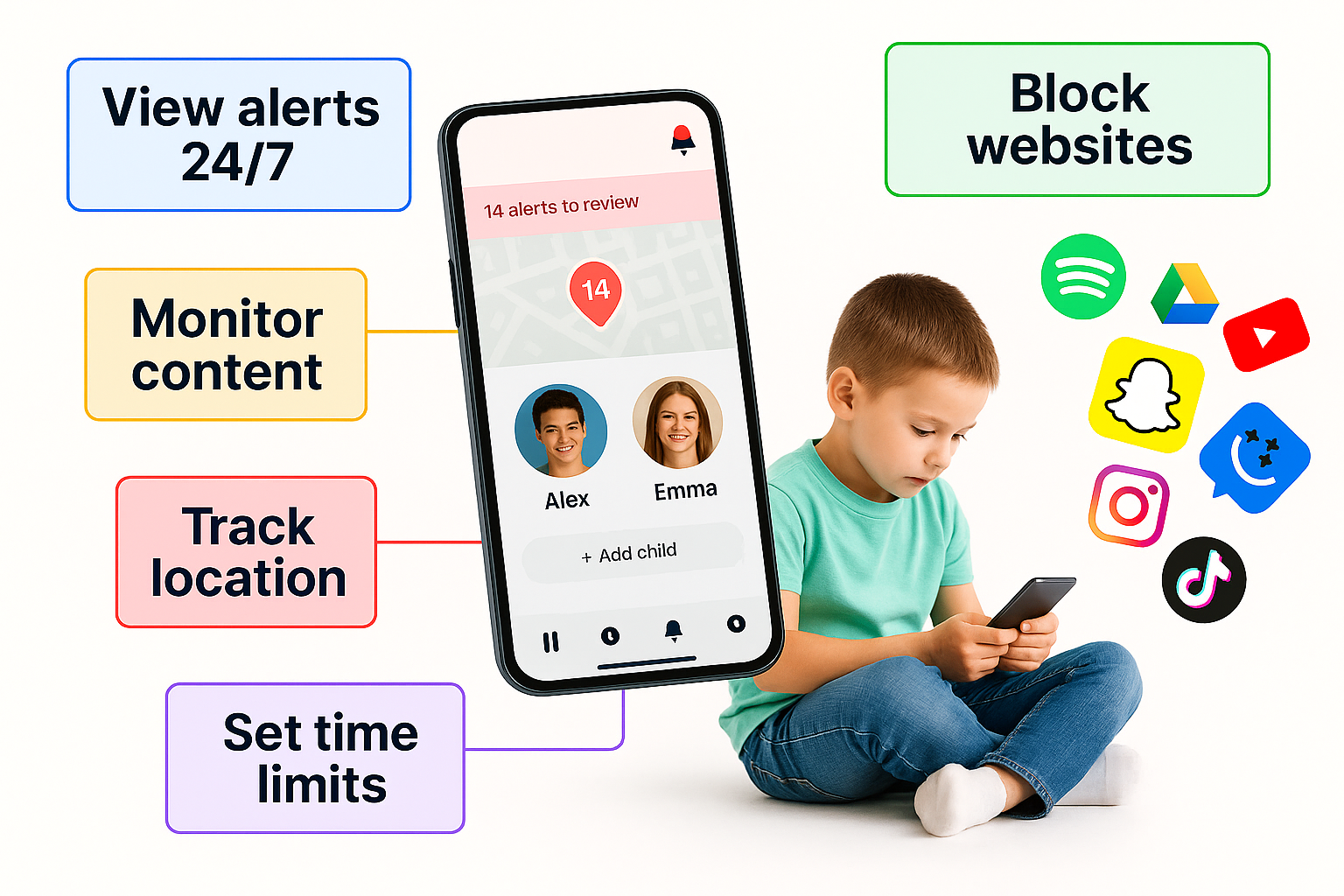🚀 The Future of Digital Parenting: What Raising Kids with Tech Will Look Like by 2026
It wasn’t long ago that kids’ phones were just basic flip devices. Today, they’re GPS-enabled, app-managed, and filled with parental controls. Smartwatches have replaced walkie-talkies. Video calls happen before kindergarten.
And yet — this is just the beginning.
By 2026, the way parents interact with children’s tech will change dramatically. Devices will get smarter. Risks will evolve. But so will opportunities for teaching, connecting, and protecting.
In this blog, we explore the next wave of digital parenting tools, and what moms, dads, and caregivers can expect in the very near future.
1. Emotion-Aware Devices for Kids
New phones and smartwatches are already testing ways to recognize children’s emotions — through voice tone, typing speed, and even facial expressions.
By 2026, kids’ devices may include:
- Emotion alerts for parents (“Your child seems anxious during calls today”)
- Mood-tracking journals integrated with screen time patterns
- Smart wellness suggestions like “Try a calming breathing app” when stress is detected
This might sound futuristic — but it’s coming. And it will give parents deeper insights into how digital life is really affecting their kids’ emotional well-being.
2. AI Co-Parenting Assistants
Think Alexa — but trained specifically for child digital wellness.
Imagine a built-in AI that:
- Suggests new screen time routines based on behavior
- Filters conversations for red flags like bullying or unsafe contact
- Automatically blocks apps or messages that don't align with family rules
- Offers digital literacy lessons directly to your child
This assistant wouldn’t replace parenting — but it could make managing digital life a lot more proactive and less reactive.
3. Context-Aware Screen Limits
Traditional screen-time tools are based on hours or app names. In the near future, we’ll see “contextual screen time” — smarter limits based on when and how a device is used.
For example:
- Homework apps stay open longer during school days
- Messaging friends is allowed on weekends but limited during family dinner hours
- Video games are paused automatically after mood indicators suggest fatigue
This flexible approach personalizes tech habits instead of punishing usage across the board.
4. Next-Gen GPS & Safe Zones
Today’s GPS watches already let parents see where their child is. But in 2026, expect:
- 3D location data showing exact building levels or rooms (e.g. "3rd floor of school library")
- Auto-alerts when a child’s behavior changes inside a familiar space (e.g. “Unusual pace in neighborhood park”)
- Smart fencing — devices that gently remind kids to check in if they linger outside approved zones
Safety is going hyper-local — and hyper-smart.
5. Kid-Centric Social Platforms (Finally)
Most social media was designed for adults, then watered down for kids. But that’s changing.
Soon, we’ll likely see:
- Purpose-built social apps for kids under 13
- Auto-moderated comment sections
- Invite-only networks of parent-approved friends
- Delayed post publishing for emotional regulation (“Want to post this tomorrow instead?”)
These tools aim to keep kids socially connected without falling into the dopamine trap of likes, followers, and toxic trends.
6. Shared Digital Dashboards for Families
Instead of managing every app on every device, parents will use centralized “family tech hubs” to:
- Review reports from all kids’ phones/watches in one place
- See conversation patterns, not just call logs
- Share digital calendars, wellness check-ins, and screen limits per child
- Reward healthy habits across devices (e.g., less screen time = more weekend privileges)
Think of it like a smart thermostat — but for parenting in a digital house.
7. More Kid Voices in Digital Design
The biggest shift may not be tech at all — but perspective.
Tech companies are starting to include kids in the design process. In the next few years, expect to see:
- Feedback from child users shaping device interfaces
- Kid-led focus groups on app safety and features
- Greater transparency in how data is collected from minors
- Co-creation opportunities (like build-your-own-phone-layout kits)
Children won’t just use tech — they’ll help design safer, smarter tools alongside adults.
How Parents Can Prepare Today
The future is closer than it seems. Here's what you can do now to stay ready:
- Start with tech that grows with your child — like a kids’ smartwatch or phone with parental controls.
- Focus on digital habits, not just screen time minutes.
- Keep conversations going about online safety, emotions, and healthy tech use.
- Review how your current tools work — are they flexible? Responsive? Easy to monitor?
- Think long-term: What kind of digital citizen do you want your child to become?
Digital parenting isn’t about keeping up with the next app or device — it’s about building connection, trust, and skills that carry your child into the future.
Phones and smartwatches will evolve. Risks will shift. But one thing remains constant: your role as guide, protector, and partner in your child’s tech journey.
The future looks bright — and a little bit smarter. Let’s get ready together.

